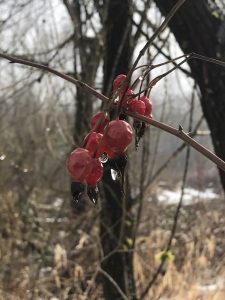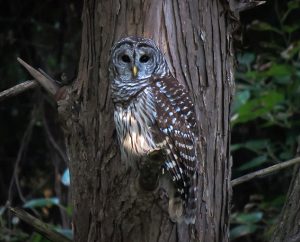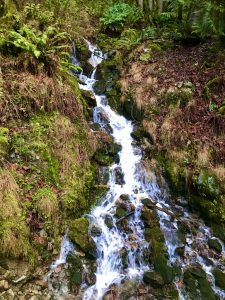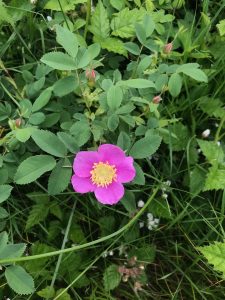Red rose hips
Hangover snow
Birds sing
Category Archives: Sharing
Nightshift
Early Morning Hours
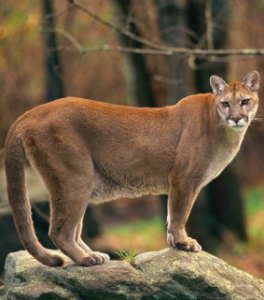 Mountain lion softly lands
Mountain lion softly lands
Aaaaach!
Taking backward steps
Grateful for life
Water Trails
Water Bears – Moss Piglets – Slow Steppers
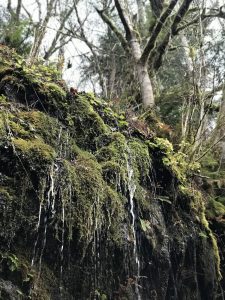 What I learned about Water Bears from author Jay Griffiths’ amazing article Dwelling on Earth makes walking meditation a whole new experience! Here is Jay’s wonderful writing:
What I learned about Water Bears from author Jay Griffiths’ amazing article Dwelling on Earth makes walking meditation a whole new experience! Here is Jay’s wonderful writing:
Smaller than even a grain of sand is the water bear, a pioneer who inhabits new environments so that other invertebrates can then make themselves at home. They are found in almost every habitat on Earth, from tropical rainforests to the Antarctic, from mountain peaks to sea floors. This tiny creature, visible only through magnification, is also called the moss piglet, as it lives in films of water in mosses and lichens as well as sand dunes, soil, and leaf litter.
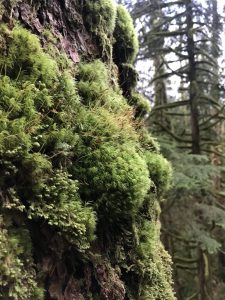 Water bears, so-called for their barreling rolling gait, are more properly known as tardigrades, literally “slow-steppers”: not for them the speed of a rocket launch. Slow and ancient, they are thought to be some 530 million years old. About half a millimeter in length, they are short and chubby with eight legs, and many have pigment-cup eyes and sensory bristles. They can survive cold at minus 272 degrees Celsius (520°F) and heat at over 150 degrees Celsius (300°F). They can go ten years without water and thirty years without food, drying out until they are only about 3 percent water. (When they get water, they rehydrate and reproduce.) They can withstand pressure up to 1,200 times atmospheric pressure and can suspend their metabolism, entering “cryptobiosis.” They have survived Earth’s first five mass extinctions and are the first known animal to survive in outer space—on the outside of a space rocket.
Water bears, so-called for their barreling rolling gait, are more properly known as tardigrades, literally “slow-steppers”: not for them the speed of a rocket launch. Slow and ancient, they are thought to be some 530 million years old. About half a millimeter in length, they are short and chubby with eight legs, and many have pigment-cup eyes and sensory bristles. They can survive cold at minus 272 degrees Celsius (520°F) and heat at over 150 degrees Celsius (300°F). They can go ten years without water and thirty years without food, drying out until they are only about 3 percent water. (When they get water, they rehydrate and reproduce.) They can withstand pressure up to 1,200 times atmospheric pressure and can suspend their metabolism, entering “cryptobiosis.” They have survived Earth’s first five mass extinctions and are the first known animal to survive in outer space—on the outside of a space rocket.
 It seems like a parable. Yes, the water bears survived exposure to the vacuum of outer space without the protection of atmosphere, but they did so by entering their own death-zone. As soon as they arrived back on Earth, they rehydrated in delirious relief with the water of life, and then reproduced. Every scrap of life is eager to thrive in the one place where it can, living between two skins: the tissue of soil and the delicate skein of the ozone layer. Here is where life flourishes, in or on the soil, the source of our nourishing in every sense.
It seems like a parable. Yes, the water bears survived exposure to the vacuum of outer space without the protection of atmosphere, but they did so by entering their own death-zone. As soon as they arrived back on Earth, they rehydrated in delirious relief with the water of life, and then reproduced. Every scrap of life is eager to thrive in the one place where it can, living between two skins: the tissue of soil and the delicate skein of the ozone layer. Here is where life flourishes, in or on the soil, the source of our nourishing in every sense.
Deer Friend
Morning Moments
Cottonwood: Friend and Ally
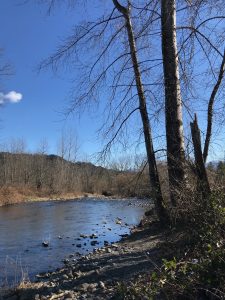 Cottonwood is my plant ally. She or “ki” has been my friend for many years. My friend Patti introduced me to Cottonwood’s magic. Years ago she gave me an oil infused with the resin of Cottonwood buds. I’ve been using it on my body and many other bodies in my massage therapy practice ever since. I find Cottonwood essence profoundly grounding and soothing. By essence I mean Ki’s resinous buds’ sweet balsamic scent, her towering tree body crowning toward the sky and her amazing rhizomes that spread from roots and fallen branches along rocky river beds.
Cottonwood is my plant ally. She or “ki” has been my friend for many years. My friend Patti introduced me to Cottonwood’s magic. Years ago she gave me an oil infused with the resin of Cottonwood buds. I’ve been using it on my body and many other bodies in my massage therapy practice ever since. I find Cottonwood essence profoundly grounding and soothing. By essence I mean Ki’s resinous buds’ sweet balsamic scent, her towering tree body crowning toward the sky and her amazing rhizomes that spread from roots and fallen branches along rocky river beds.
Making New Friends: The Gifts of Rose Petal
My dear daughter-in-law, Jenny, and I made some new friends today. We joined Karen Sherwood of Earthwalk Northwest for one of a series of day classes in which we learn how to identify wild plants and their many virtues: food, medicine, tools. In the classroom, Karen explained the ethical principles and wild food foraging guidelines. She encouraged us to bring wild plants into our lives – make new friends by learning about one plant every week and incorporating wild food on to our plates as often as possible. Continue reading
Blue Sky Camas Day
 May Day! This Wednesday, we dedicated our thirteenth Ethnobotany Apprenticeship class to the camas lily and its roots. Imagine the importance of this vital source of carbohydrates to native people living here for thousands of years: Years before we could buy the carbo-centric cornucopia of foods in supermarkets and fast food chains. We traveled to the Mima Mounds Natural Area Preserve where Blue Camas or Camassia quamash decorates the grasslands. The Mima Mounds are a curious landscape of low, domelike, natural mounds that seem to be erupting from the earth. Studies theorize that they were formed as the result of glacial movement.
May Day! This Wednesday, we dedicated our thirteenth Ethnobotany Apprenticeship class to the camas lily and its roots. Imagine the importance of this vital source of carbohydrates to native people living here for thousands of years: Years before we could buy the carbo-centric cornucopia of foods in supermarkets and fast food chains. We traveled to the Mima Mounds Natural Area Preserve where Blue Camas or Camassia quamash decorates the grasslands. The Mima Mounds are a curious landscape of low, domelike, natural mounds that seem to be erupting from the earth. Studies theorize that they were formed as the result of glacial movement.

